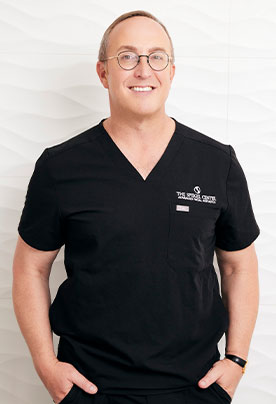
Lip augmentation is undoubtedly one of the trendiest procedures in cosmetic surgery. Patients turn to it as a way to enhance lip shape, structure, and volume. As you begin to investigate lip augmentation, the word “dermal fillers” will certainly come up. Dermal fillers are what’s injected into the lips to enhance their appearance. In this blog post, we’ll tell you everything there is to know about dermal fillers so that you can make an informed decision in regards to whether or not you want to go ahead with a lip augmentation procedure.
Dermal Fillers
Dermal fillers are naturally derived or synthetic materials that are injected into the skin to enhance appearance and reduce wrinkles, lines, or depressions. They’re most commonly injected into the face and lips. For the purposes of this article, we’ll largely be referring to lip dermal fillers.
Contrary to preconceived notions, Botox and dermal fillers aren’t the same thing. In fact, one of the best ways to explain dermal fillers is to distinguish them from Botox. Botox weakens facial muscles in an attempt to reduce wrinkles and facial lines. Dermal fillers “plump” an area to achieve to the same results. The distinguishing feature for dermal fillers is the facial enhancement associated with the way they plump the skin. This is particularly important in lip augmentation. The positive results seen when dermal fillers are injected into the lips are substantially higher than Botox.
Types of Dermal Fillers
Hyaluronic acid is the most commonly used dermal filler because it offers maximum results with minimal side effects. The name “hyaluronic acid fillers” is used in reference to it. It’s a major component of the skin and plays a large role in tissue repair. There are many different types of hyaluronic acid fillers. Some of the most common are Juvederm, Captique, Perlane, Belotero, Elevess, Hylaform, Perevelle and Restylane. Each works in a slightly different way to produce slightly different results. It’s always best to consult a physician in regards to which is best for you. Make note that some might offer longer lasting results and side effects such as redness, swelling, and bruising can occur.
Collagen was the most used dermal filler before hyaluronic acid. It’s still used today, but much less often because hyaluronic acid alternatives are safer and have longer lasting results.
Fat injections and implants can also be used as dermal filers. They have increased side effects and varied results.
Should you be contemplating lip augmentation, it’s always recommended that you consult a cosmetic or plastic surgeon. A good one will take a detailed medical history, evaluate your lip’s health and appearance, and determine if you’re a surgical candidate. If you are, you can work together to further increase your understanding of dermal fillers and which one will be put into your body. Ask questions and express your concerns should you have any. A good surgeon will always attentively listen, answer, and put you at ease with your decision.





